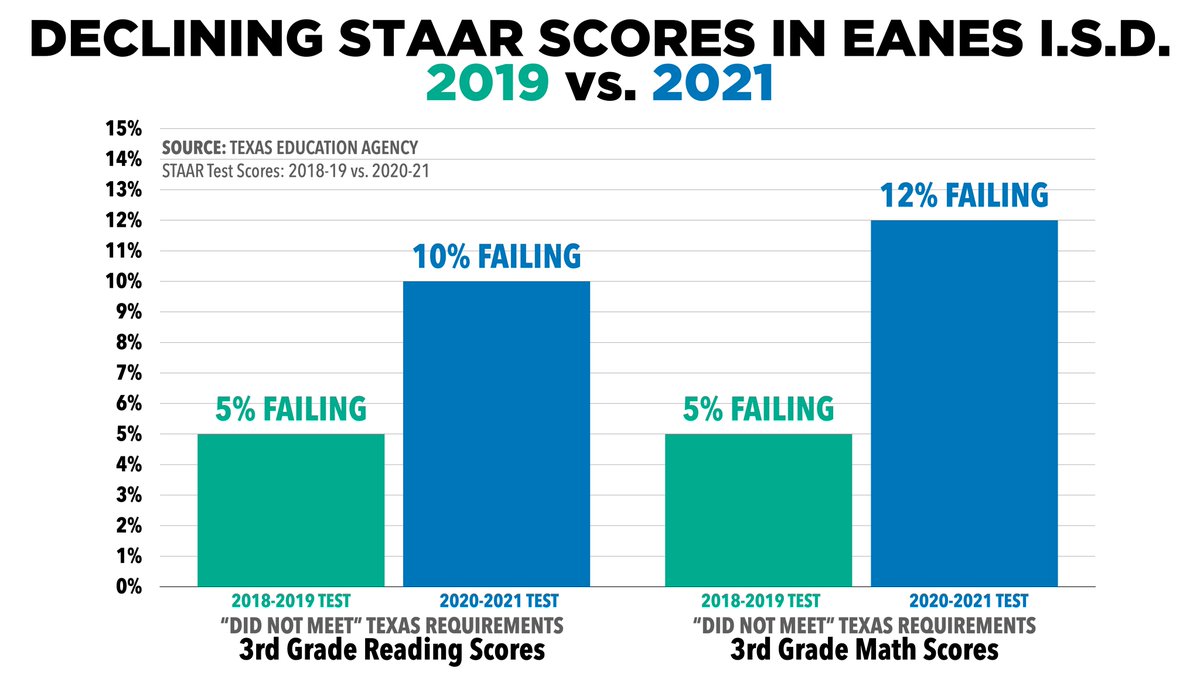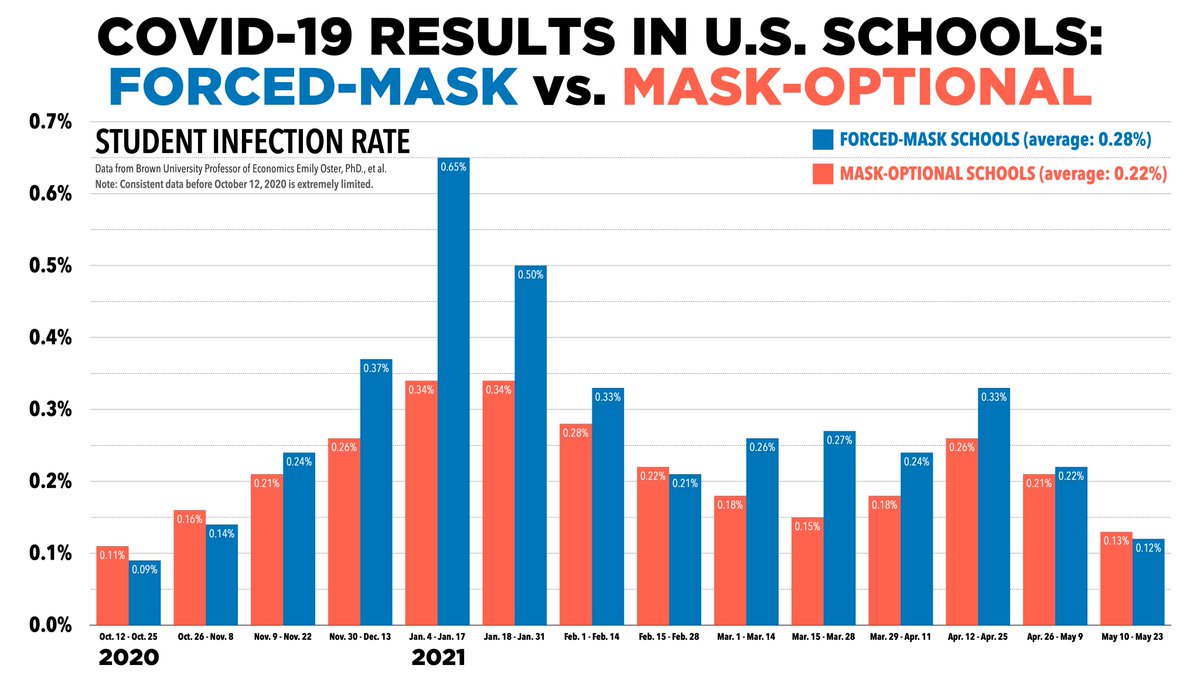Remote "learning" in 2020-21 was an abject failure in Texas school districts: tea.texas.gov/sites/default/… 

Divided into quartiles, the more school districts were remote rather than in-person in 2020-21, the worse they did on reading and math tests. 

In every category of STAAR Test achievement (Masters, Meets, Approaches, or Did Not Meet Grade Level), in every subject, in every grade, the more remote school districts had worse learning loss than the more in-person school districts.
If one were designing policies to intentionally weaken the long-term competitiveness of Texas students in the global economy, remote "learning" would be a great place to start.
These learning losses in math are statewide aggregates, but they're concentrated in remote districts.
These learning losses in math are statewide aggregates, but they're concentrated in remote districts.

In reading, the learning losses were not as severe as in math, but these numbers still don't portend great things for Texas students going forward: 

Austin-area @EanesISD is the top-ranked school district in Texas, according to @NicheSocial and other rankings: niche.com/k12/d/eanes-in…
Eanes was not classified as fully in-person in 2020-21.
Let's look at STAAR test achievement in E.I.S.D.
Eanes was not classified as fully in-person in 2020-21.
Let's look at STAAR test achievement in E.I.S.D.
I just grabbed the reading and math numbers from 3rd, 5th, and 7th grades in the interest of time and to keep it simple. Maybe other grades/subjects performed better. Who knows. You can look it all up yourself here: txreports.emetric.net
Failure was up in each category.


Failure was up in each category.



On the STAAR Test, third graders failing reading and math in @EanesISD doubled and more-than-doubled, respectively, from the 2019 test to the 2021 test. 

On the STAAR Test, fifth graders failing reading and math in @EanesISD nearly-doubled and more-than-doubled, respectively, from the 2019 test to the 2021 test. 

On the STAAR Test, seventh graders failing reading and math in @EanesISD increased significantly and more-than-doubled, respectively, from the 2019 test to the 2021 test. 

Failure doubling in most categories is bad enough, but @EanesISD also saw the proportions of those mastering reading and math plummeting dramatically from 2019 to 2021. 





On the STAAR Test, the percentage of @EanesISD third graders mastering reading and math fell significantly from the 2019 test to the 2021 test. 

On the STAAR Test, the percentage of @EanesISD fifth graders mastering reading fell only a little, while the percentage mastering math fell significantly, from the 2019 test to the 2021 test. 

On the STAAR Test, the percentage of @EanesISD seventh graders mastering both reading and math fell significantly from the 2019 test to the 2021 test. 

What proportions of increases in "did not meet" scores and declines in "masters" scores are attributable to "the pandemic," generically?
What, more specifically, is attributable to lockdowns, shutdowns, closures, quarantines, remote/hybrid "learning," and even mask monomania?
What, more specifically, is attributable to lockdowns, shutdowns, closures, quarantines, remote/hybrid "learning," and even mask monomania?
Moreover, what role did @EanesISD's abrupt shift in focus toward Critical Race Theory play in its declining standardized test scores?
https://twitter.com/WILLisms/status/1423014995302965252
The numbers are clear.
Remote "learning" in Texas was an abject failure.
That some districts are still pressing ahead with it, again, in 2021-22 is completely absurd, but I suppose we do live in absurd times.
Remote "learning" in Texas was an abject failure.
That some districts are still pressing ahead with it, again, in 2021-22 is completely absurd, but I suppose we do live in absurd times.
https://twitter.com/WILLisms/status/1410370251108274183
• • •
Missing some Tweet in this thread? You can try to
force a refresh














